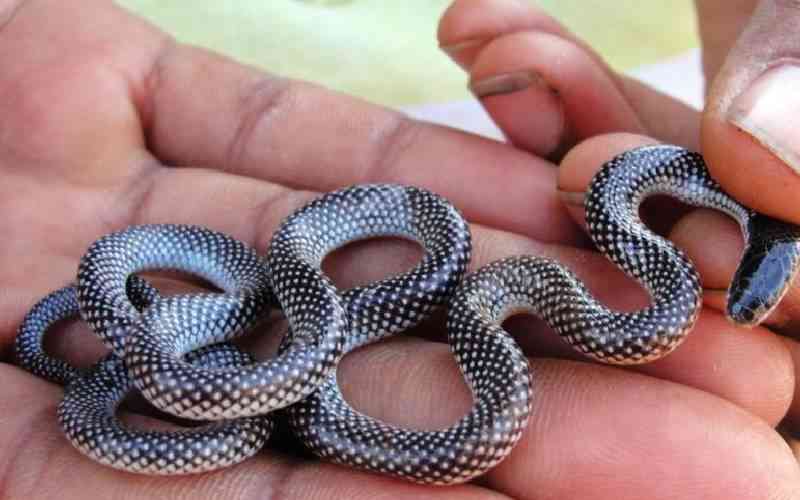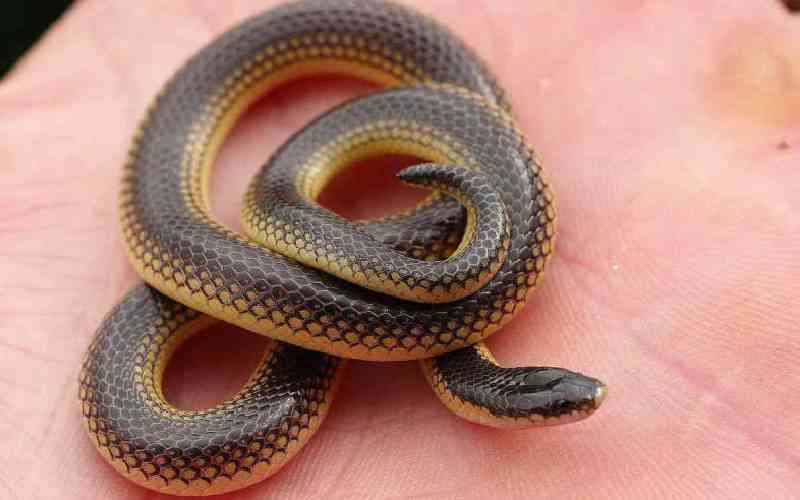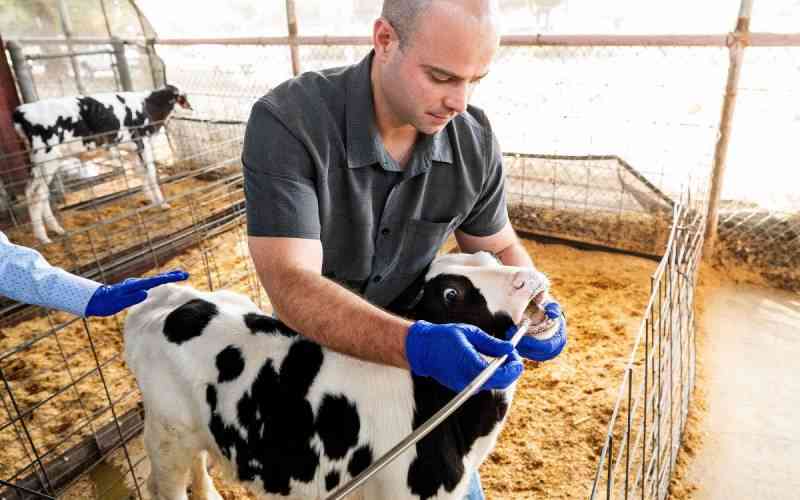
In a rare turn of events, scientists have classified a new family of snakes. Just three known species belong to the newly identified Micrelapidae family.
Scientists say these reptiles are thought to have slithered off the snake evolutionary tree 50 million years ago.
They were previously considered part of the largest snake family, Colubridae, but DNA tests in recent years showed otherwise.
The snakes have slender, cylindrical bodies with smooth scales in regular rows and a short, pointed tail. They also feature small heads that blend with the neck, and often, black and yellow rings. The size of these snakes also varies depending on the species, but most are relatively small, ranging from about 15-60cm (6-23 inches) in length.
"Today we tend to assume that most large groups of animals, such as families, are already known to science, but sometimes we still encounter surprises, and this is what happened with Micrelapid snakes," Professor Shai Meiri of Tel Aviv University's School of Zoology says in a news release.
Tel Aviv University researchers hailed these findings as a rare advance in modern science. They were part of a multinational team from Finland, the United States, Belgium, Madagascar, Hong Kong and Israel, including Meiri, who identified the Micrelapidae family. Their findings were published in the journal Molecular Phylogenetics and Evolution in March.
"As far as we know, the new family includes only three species, one in Israel and neighbouring countries, and two in East Africa," Tel Aviv University scientists say in the press statement.
Patrick Malonza, a herpetologist and research scientist at the National Museums of Kenya, confirmed the recent identification of the new family of snakes, some of which live in Kenya.
- WHO warns of antivenom shortages amid snake bite scourge
- Embracing snakes and biodiversity for a balanced ecosystem
Keep Reading
"Yes, molecular data has shown that they are unique, and we are grateful that they have been confirmed to be in their own family," he said.

The snakes belong to the genus Micrelaps, previously classified under the family Colubridae, which includes the vast majority of snakes. "We are aware of the uncertainty and debate around snakes in this genus, now family Micrelapidae," Malonza added.
M. muelleri are rear-fanged venomous snakes. They are found in sandy desert habitats in southern Israel and also in parts of the Occupied Palestinian Territories, Jordan and Syria.
Kenyan and Tanzanian drylands are also home to two species of these small, mostly harmless snakes in the same genus and newly identified family: M. vaillanti, the desert black-headed snake, is common in northeastern, eastern, southern and southeastern Kenya. M. bicoloratus, known as the Kenya two-headed snake, is found in Maasai land, Somaliland, Laikipia plateau, Ukambani, Tsavo, Thika, Lamu and Garissa.
"These are quite friendly snakes that are mostly harmless to humans, and they should not be persecuted (killed)," Malonza said. "They're really beautiful to look at in terms of aesthetic value."
Many people in Kenya kill snakes on sight, especially venomous ones. While snakes play an important role in the ecosystem, experts urge caution and education.
In many African cultures, snakes are associated with evil or witchcraft, resulting in their indiscriminate killing. However, Kenya Wildlife Service (KWS) Nyanza region Senior Warden Christine Boit says some snake species play significant roles in controlling rodent populations, controlling pests, sustaining the food chain and maintaining ecosystem balance.
In addition to their ecological importance, snakes are also important cultural symbols in some African communities that view snakes as protectors or symbols of good luck, and killing them can be disrespectful or taboo.
Malonza also notes that Micrelapidae snakes provide food for other animals. "Birds of prey and other snakes prey on Micrelapidae snakes, which supports the broader food web in their ecosystem," he says.
According to researchers, Micrelaps snakes separated from the rest of the snake evolutionary tree roughly 50 million years ago and have evolved independently as a different and separate family since then. Researchers suspect the snakes originated in Africa and at some point, some of them likely migrated north through the Great Rift Valley.
 The Standard Group Plc is a multi-media organization with investments in media platforms spanning newspaper print
operations, television, radio broadcasting, digital and online services. The Standard Group is recognized as a
leading multi-media house in Kenya with a key influence in matters of national and international interest.
The Standard Group Plc is a multi-media organization with investments in media platforms spanning newspaper print
operations, television, radio broadcasting, digital and online services. The Standard Group is recognized as a
leading multi-media house in Kenya with a key influence in matters of national and international interest.











